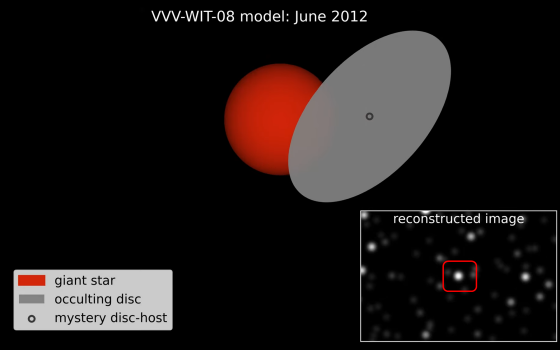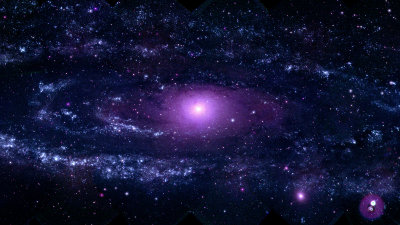There may be an 'unidentified opaque giant disk' that hides the giant star

According to a survey by astronomers, it was observed that the star 'VVV-WIT-08 ', which is 100 times larger than the Sun, 'fluttered' over hundreds of days. Such flashes are rare, and astronomers speculate that 'it is a huge opaque disk that hides the giant star.'
VVV-WIT-08: the giant star that blinked | Monthly Notices of the Royal Astronomical Society | Oxford Academic

Giant'Blinking' Star Spotted in Milky Way's Central Region | Astronomy | Sci-News.com
According to a survey conducted by Cambridge University astronomer Lee Smith and others, the brightness of the star 'VVV-WIT-08', which is 100 times larger than the Sun, located more than 25,000 years away from the Earth, is bright. It was said that the brightness was reduced to 97% of the peak at one time, and the brightness was restored again in about several hundred days. In the video below, you can see a simulation of how VVV-WIT-08 is blinking.
VVV-WIT-08 --YouTube
The red circle in the middle of the screen is the sun, the gray ellipse is the disk, and the circle in the center of the disk is the 'host of the mysterious disk'. The part surrounded by the red frame at the bottom right of the screen is VVV-WIT-08.

A star whose brightness changes

The theory proposed instead is that 'there is an unknown disk that covers VVV-WIT-08.' As a result of the investigation, Smith et al. Speculate that the VVV-WIT-08 may have been temporarily hidden by a 'fallback disk' in which the gas around the black hole became a disk. Smith et al. Point out that there may be other flashing stars like the VVV-WIT-08, and hope for further investigation.
Related Posts:
in Science, Posted by log1p_kr







